Your local electric heating installers in Edinburgh
Are you looking for electric heating for your home, business or rental property in Edinburgh? Ideal specialise in installing high heat retention storage heaters, panel heaters, electric radiators, and underfloor electric heating. Let’s find the perfect heating for your home.

Electric heating installation
As the demand for efficient and environmentally friendly electric heating systems grows, more homeowners are turning to electric options for their reliability and ease of installation. Whether you’re looking to upgrade your current heating system or install a new one, our local electric heating installers in Edinburgh are here to help you plan your installation.
What is the cost to install an electric heating system? The cost can vary depending on what type of system you choose, in the sections below we will provide detailed information on what’s involved with each installation.
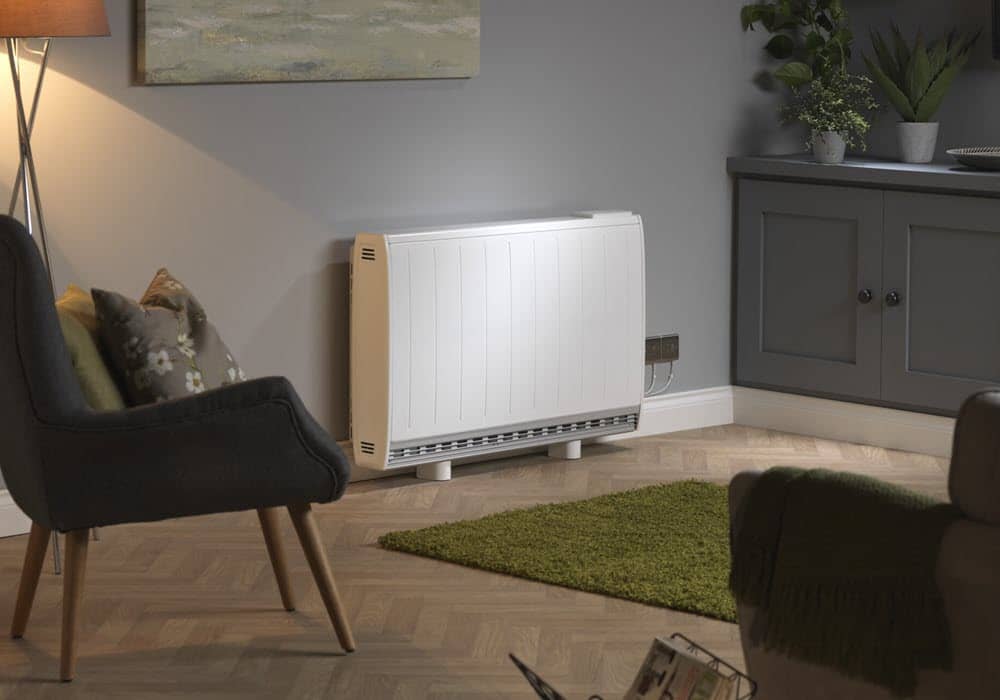
High heat retention storage heaters
Installing storage heaters is an economical heating option and means you can take advantage of off-peak electricity tariffs. Storage heaters work by storing heat during the night, when electricity is cheaper, and releasing it throughout the day.
Modern storage heaters like the Quantum’s are highly efficient and come with features like programmable timers and thermostats, which helps you control the temperature and usage. Ideal for homes with fluctuating heating demands, storage heaters provide a cost-effective and reliable way to keep your space warm.
Information for landlords: The Dimplex Quantum also meets the new ‘repairing standard‘ for rented properties in Scotland, so you can comply with the latest regulations and provide efficient heating solutions for your tenants.
Dimplex Quantum installation
Dimplex is one of the leading electric heating manufacturers in the UK, known for its energy efficiency and advanced technology. The Dimplex Quantum system is a great option for homeowners, landlord or businesses in Edinburgh and offers several key benefits:
- Dimplex Quantum storage heaters are specially classified as a ‘high heat retention’ storage heater which features smart controls that take exactly the correct amount of charge. Additionally the Quantum has a highly insulated core to store the heat for longer and has a fan to extract the heat more evenly.
- It uses off-peak electricity to charge, and releases heat as needed to provide consistent and comfortable heat throughout your home – which can reduce your energy costs.
- All Quantum’s include a digitally controlled, electronic thermostat and 7 day programmable user timer.
- The smart controls and programmable settings allow you to customise your heating schedule to fit your lifestyle.
… by expert Dimplex Quantum installers
Our Edinburgh-based engineers are ready to help you transition to a state-of-the-art Dimplex heating system in your home. Installation is usually fairly straightforward and involves replacing existing storage heaters or setting up new units in your home.
Our expert installers will ensure a straightforward installation with minimal disruption to you – we will handle everything from removing old units to wiring and setting up your new Dimplex Quantum heaters.
Dimplex Quantum storage heaters: Key information
How long do storage heaters take to heat up? Storage heaters, including the Dimplex Quantum range, typically take several hours to fully charge. The exact time can vary based on the model and settings, but they are designed to charge during off-peak electricity hours, usually overnight.
What is electric storage heating? Electric storage heating uses off-peak electricity to heat thermal bricks inside the heater. This stored heat is then gradually released throughout the day, providing a consistent and efficient heating. The Dimplex Quantum is a modern example, utilising advanced technology for optimal energy use and control.
Are storage heaters the same as central heating? Storage heaters are not central heating systems in the traditional sense, which usually involve a central boiler and radiators connected by a network of pipes. However, they can be strategically placed throughout a home to provide uniform and comfortable warmth, functioning effectively as a decentralised heating system.
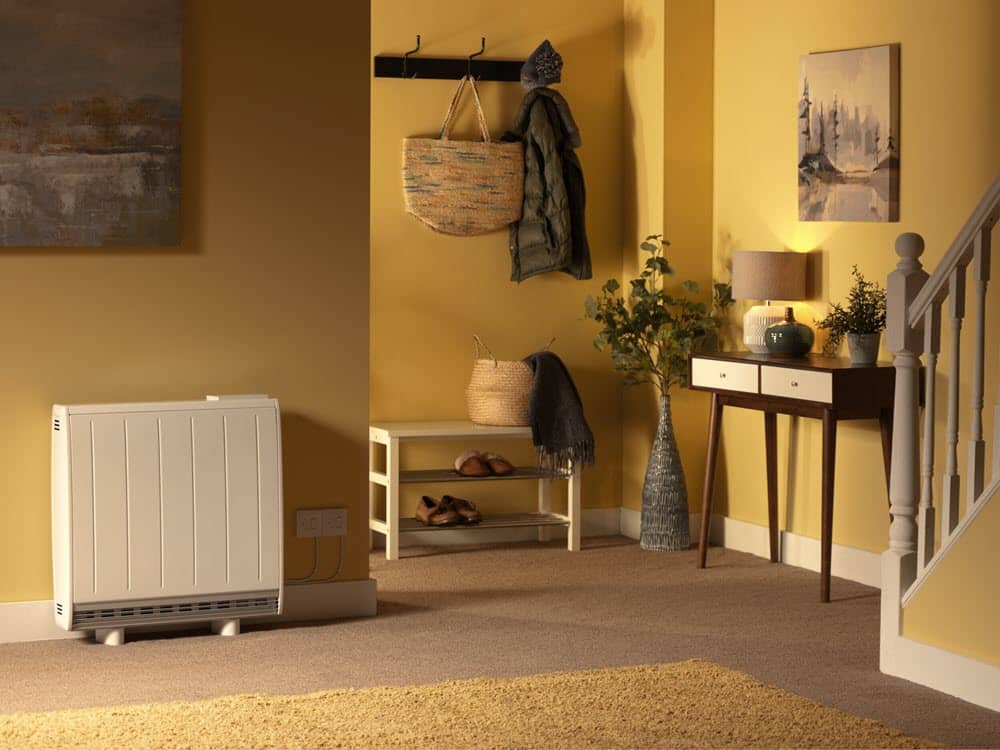
Home Energy Scotland grant and loan scheme
The Home Energy Scotland grant and loan scheme provides homeowners in Scotland with financial assistance to upgrade their heating systems and improve energy efficiency. Whether you’re considering replacing outdated systems with high heat retention storage heaters or exploring renewable energy options, the scheme offers substantial support through grants and interest-free loans.
What’s available under the scheme?
The scheme offers generous support for upgrading to high heat retention storage heaters, providing up to £2,500 in grant funding to help cover the cost, along with the option to apply for an additional £5,500 interest-free loan.
For homeowners exploring broader clean heating systems like heat pumps, there is up to £7,500 in grants available, with the option to combine this with a further £7,500 interest-free loan. These funding options can also complement renewable technologies such as solar panels or battery storage systems, helping you achieve a more sustainable home.
For more details, visit the Home Energy Scotland website. If you need assistance with your application, our team will be delighted to help guide you through the process.
Our Accreditations







Electric radiators
Electric radiators combine the benefits of traditional radiators with the efficiency of modern electric heating technology. They are filled with a thermodynamic fluid that heats up when electricity passes through, providing consistent and even heat distribution.
Wall mounted electric radiators are available in a variety of designs and sizes, making them suitable for different rooms and aesthetic preferences. With features such as programmable timers, thermostatic controls, and energy-saving modes, electric radiators offer a practical and efficient heating solution for any home.
Setting up Smart electric radiators
Smart electric radiators take heating to the next level using technology that allows you to control your heating system remotely. These radiators can be connected to your home’s Wi-Fi network, allowing you to manage the temperature, set schedules, and monitor energy usage through a smartphone app. This level of control helps optimise energy consumption, providing both comfort and cost savings.
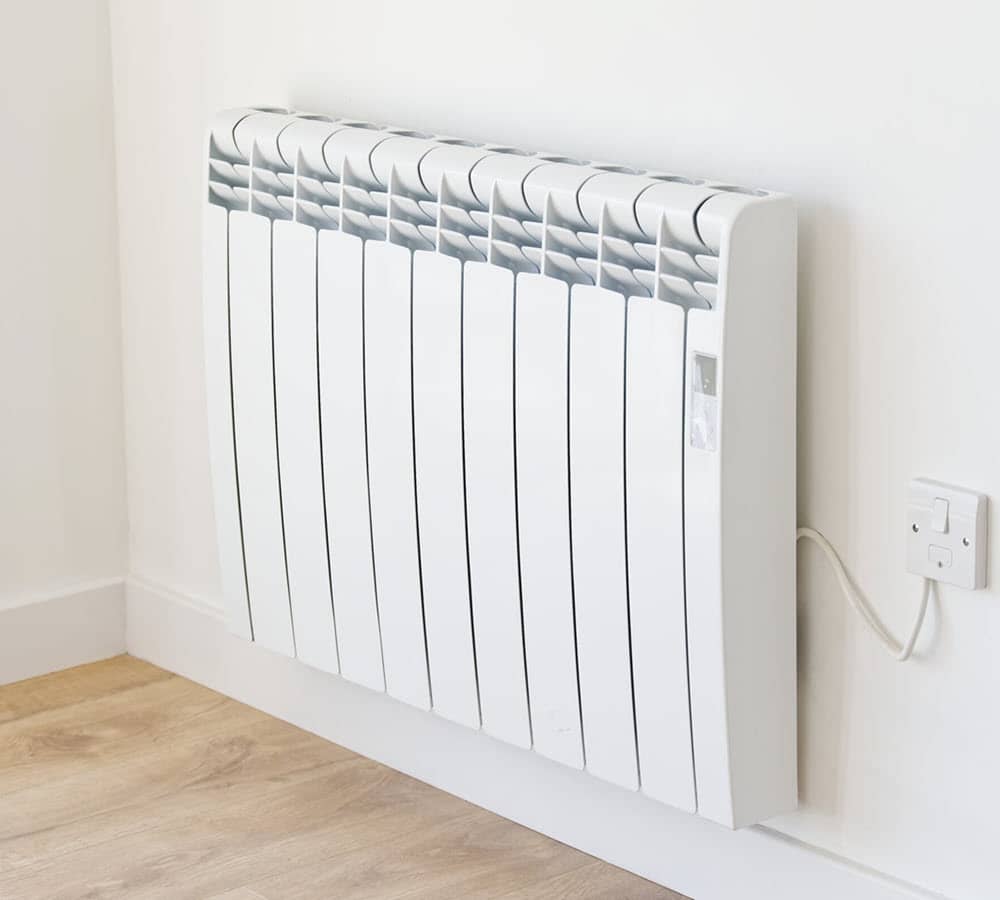
Companies we work with:
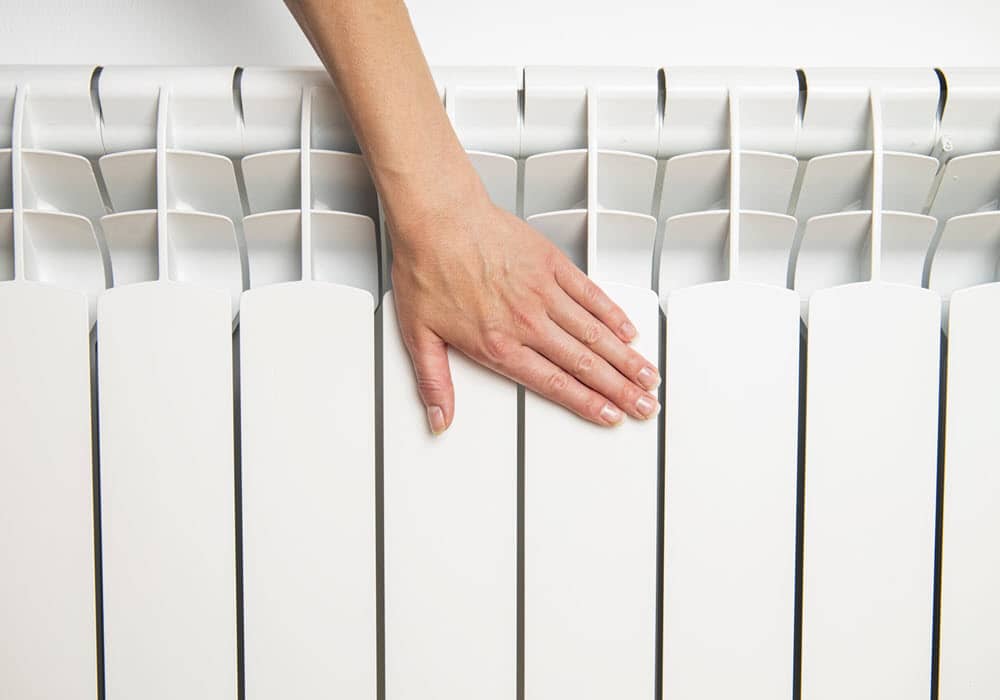
Wi-Fi electric radiators
Wi-Fi electric radiators are designed for ultimate convenience and efficiency. By connecting to your home’s wireless network, these radiators allow you to adjust heating settings from anywhere using a smartphone or tablet. They often come with advanced features such as voice control compatibility with smart home assistants, customisable heating schedules, and real-time energy consumption monitoring.
Oil filled electric radiators
Oil-filled electric radiators are a popular choice for their ability to retain heat long after the power is turned off. These radiators contain a special oil that is heated by an electric element, which then circulates to provide consistent warmth.
They are known for their silent operation and are often equipped with adjustable thermostats, programmable timers, and multiple heat settings, making them an energy-efficient and versatile heating option for any room.
Installing panel heaters
Panel heaters are a versatile and stylish option for electric heating. Slim and lightweight, these heaters can be mounted on walls or used as free-standing units, making them suitable for any room.
They heat up quickly and provide an even distribution of warmth, ensuring a comfortable environment. With options for digital controls and programmable settings, panel heaters offer convenience and flexibility. They are perfect for spaces that require rapid heating and are a great addition to modern interiors.
Warm your toes with electric underfloor heating
Electric underfloor heating is a luxurious and efficient way to heat your home. This system involves installing heating cables or mats beneath the flooring, providing gentle and consistent warmth from the ground up.
Electric underfloor heating is suitable for a variety of floor types, including tile, laminate, and carpet. It eliminates the need for radiators, freeing up wall space and creating a clean, uncluttered look.
This heating option is particularly popular in bathrooms and kitchens, where it can provide added comfort and warmth underfoot. With the ability to control the temperature in individual rooms, electric underfloor heating offers both efficiency and luxury.
How to install electric underfloor heating in a bathroom?
Installing undefloor heating involves several steps to ensure a safe and efficient system:
- Start by preparing the sub floor, ensuring it is clean, dry, and level.
- Install insulation boards cut to fit the bathroom layout, securing them with flexible tile adhesive and allowing it to dry completely.
- Next, lay out the heating mat or cable, ensuring no overlap or contact between the elements, and secure it in place. Install the floor sensor between the heating elements for accurate temperature readings and route the sensor wire back to the thermostat location.
- After the floor is laid, connect and program the thermostat, ensuring it responds correctly to temperature adjustments.
- Finally, carry out a series of tests including continuity, resistance, insulation resistance, temperature, thermostat functionality, and full system operation to confirm the installation is successful and the system operates efficiently.
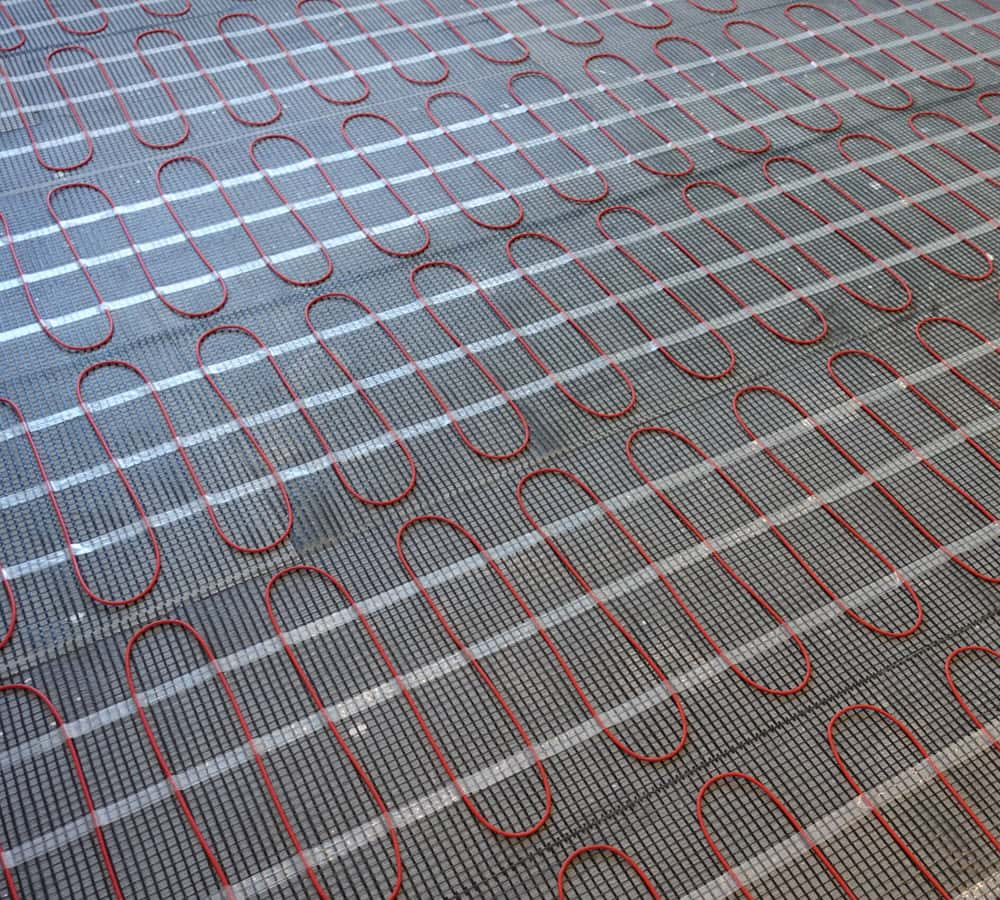
Contact Ideal Electrical today
If you’re looking for electric heating installers in Edinburgh then Ideal Electrical are here to bring your heating project to life. We’ve got it covered from design through to installation.
To give you an accurate quote without needing an initial onsite visit, we require specific information on what heaters you have or would like to have installed, images of existing heaters and the supply next to them showing how they are connected, and a short video is useful if you do not have a power point close to where you would like the heater installed. This will help us understand the scope of the installation and any preliminary work needed.
You can easily send these pictures and videos to us through email, the contact form, or via WhatsApp .
Address:
4-5 Parsons Green Terrace
Edinburgh
EH8 7AN
Contact:
Enquiry Form
Electric heating reviews
We’ve been installing electric heating around Edinburgh since 2012 – here are some lovely customer reviews.
FAQs for electric heating installations and repairs.
We have been installing electric heating for years and these are some common questions our customers ask us
If your Dimplex Quantum heater is not heating up, consider the following troubleshooting steps:
- Check the power supply: Ensure the heater is plugged in and the power switch is turned on.
- Check the thermostat settings: Verify that the thermostat is set to a temperature higher than the current room temperature. Timer settings: Ensure that the timer is set correctly, and the heater is within its operating hours.
- Safety cut-out: Some models have a safety cut-out feature. If triggered, you may need to reset the heater. Please check your user manual for instructions or call the IES team and we can attend to reset things.
- Maintenance: Dust and debris can affect performance. Clean the heater according to the manufacturer’s guidelines and this might help.
- Still need help: If none of these steps work, contact us on 0131 258 2750 .
If your Dimplex fire keeps turning off, consider these possible causes:
- Overheating protection: The heater may have an overheating protection feature that turns it off if it gets too hot. Ensure the heater is well-ventilated.
- Thermostat issues: The thermostat might be faulty or set too low, causing the heater to turn off once the set temperature is reached.
- Timer settings: Check if the timer is set to turn the heater off automatically.
- Electrical issues: Loose connections or electrical faults can cause intermittent operation. Have an electrician inspect the unit.
- Internal faults: Internal component failures can cause the heater to turn off. Professional repair may be needed.
To turn on a Dimplex heater, follow these general steps (specific models may vary slightly):
- Plug in the heater: Ensure it is connected to a power source.
- Power switch: Locate and turn on the main power switch.
- Control panel: Use the control panel to set the desired temperature and operating mode (manual or automatic).
- Remote control: If your model comes with a remote, use it to turn on the heater and adjust settings.
The cost of running a Dimplex heater depends on several factors:
- Power rating: Higher wattage heaters consume more electricity.
- Usage duration: Longer usage increases electricity consumption.
- Electricity rates: The cost of electricity in your area affects running costs.
- Efficiency: Dimplex heaters are designed to be energy efficient, but older or poorly maintained units may be less efficient.
- Insulation: Well-insulated homes retain heat better, reducing running costs. To estimate running costs, multiply the heater’s wattage by the number of hours used and your electricity rate.
In terms of running costs electric heating is generally more expensive than gas heating. However, factors such as energy efficiency, installation costs, and energy rates can influence this:
- Efficiency: Electric heaters can be more efficient, but electricity is typically more expensive than gas.
- Installation costs: Electric heaters usually have lower installation costs compared to gas systems.
- Maintenance: Electric heaters often require less maintenance.
- Energy rates: Energy rates for electricity and gas can vary significantly.
As seen in



